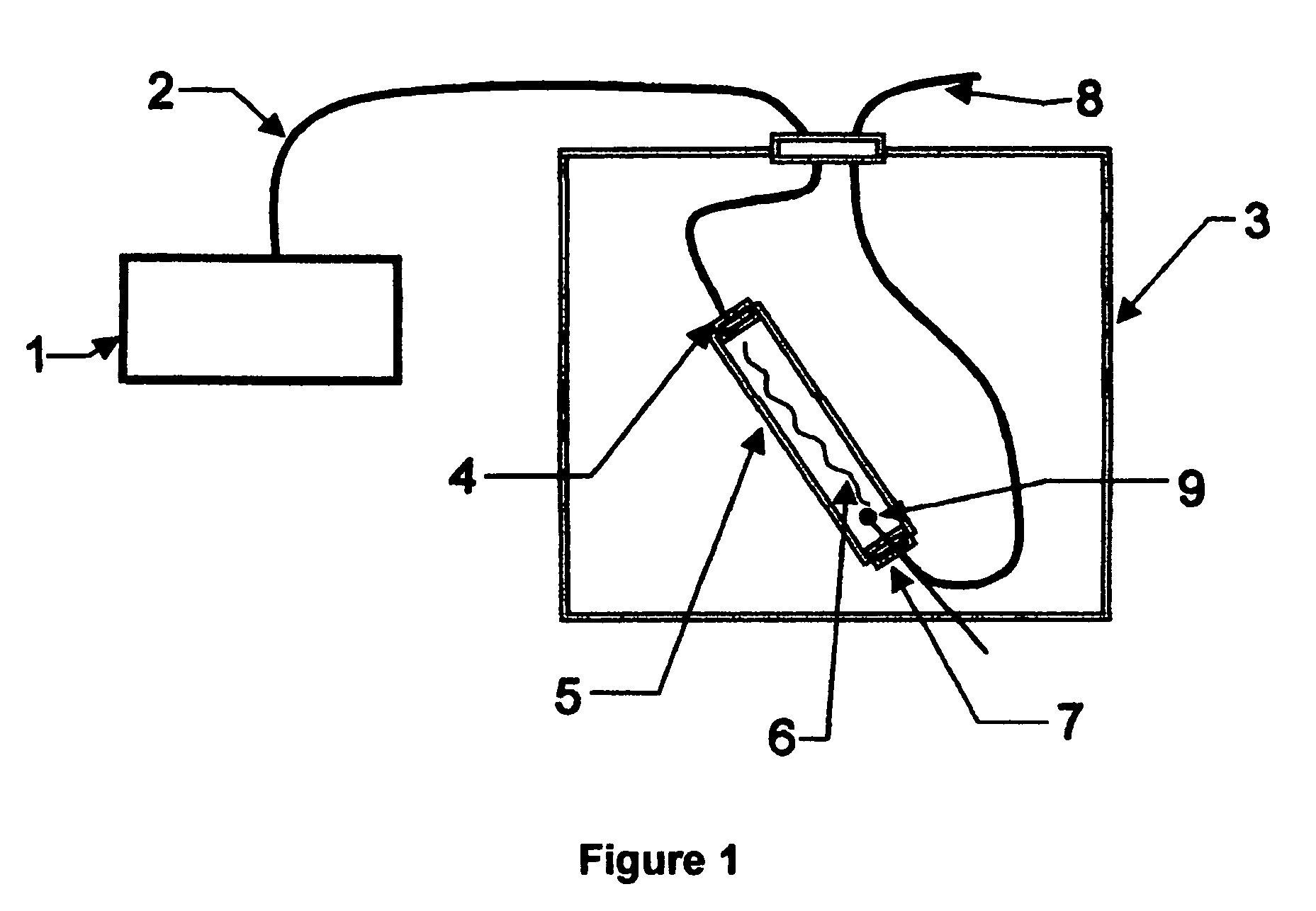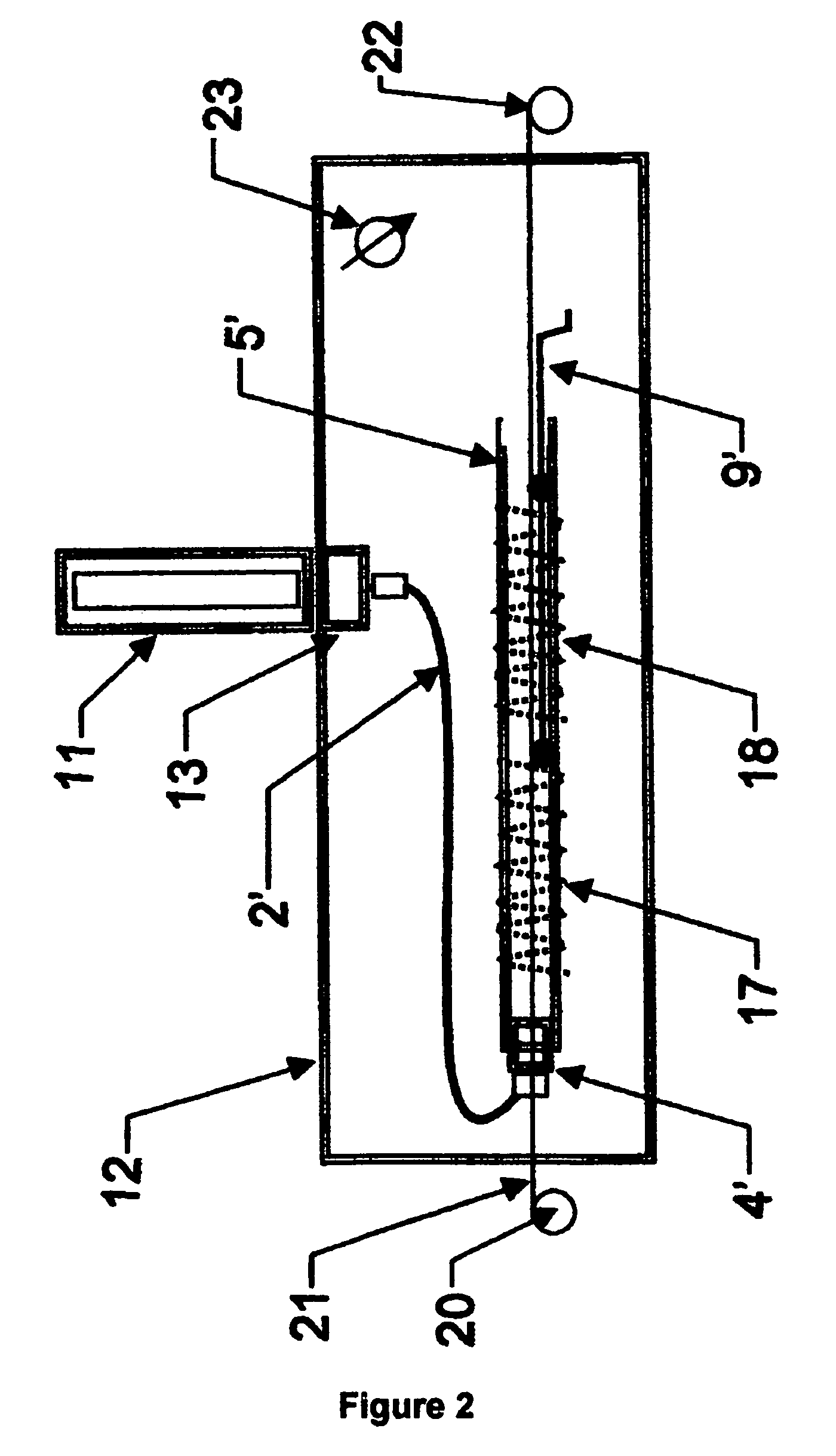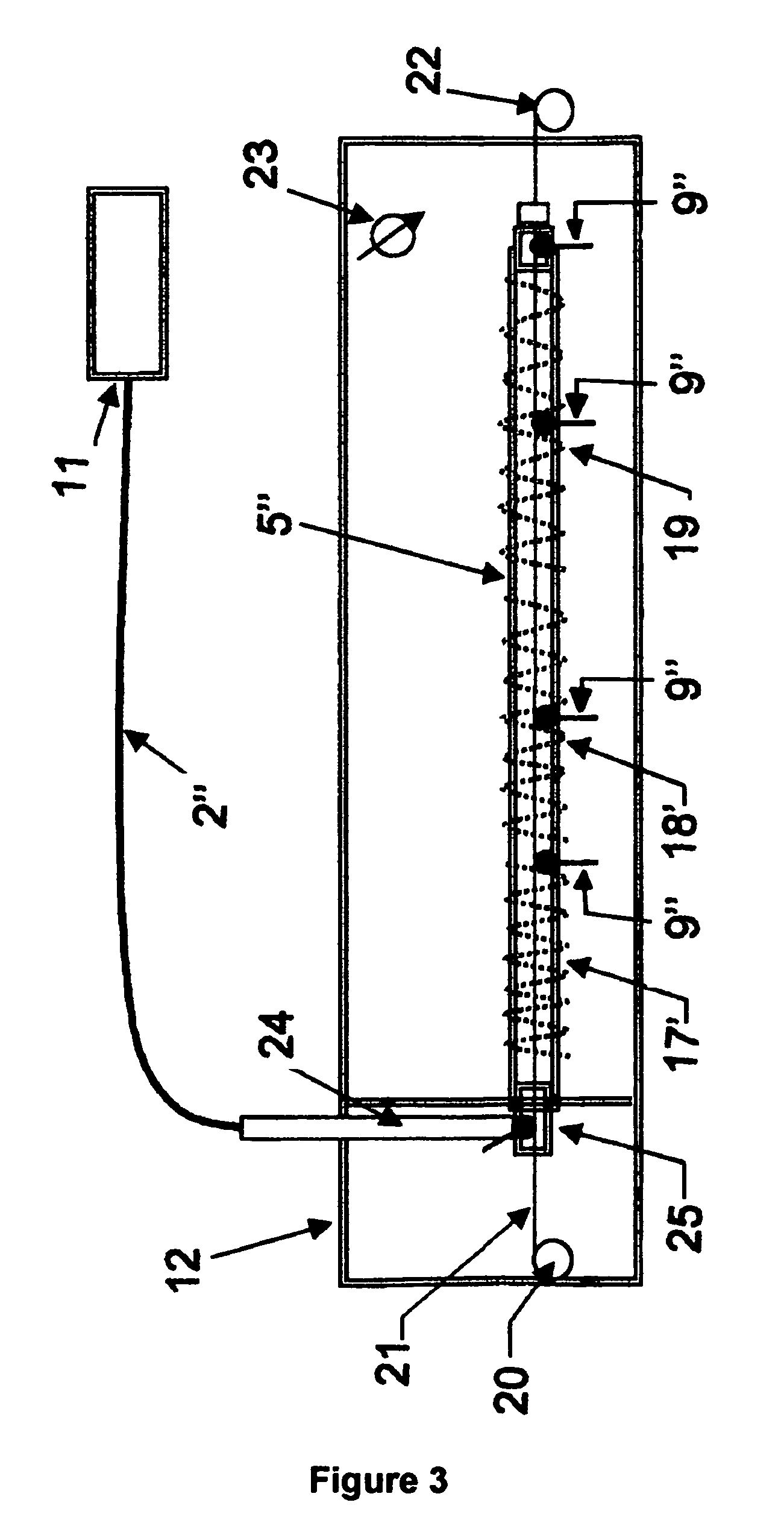Apparatus and method for stabilization or oxidation of polymeric materials
a polymer material and apparatus technology, applied in the field of apparatus and methods for stabilizing or oxidizing polymeric materials, can solve the problems of limiting the rate of oxidation, requiring more space, and limiting the carbonization and graphitization of materials,
- Summary
- Abstract
- Description
- Claims
- Application Information
AI Technical Summary
Problems solved by technology
Method used
Image
Examples
example 1
[0034]As shown schematically in FIG. 1, a commercial ozone generator 1 (Model AX8200, ASTeX Products, 90 Industrial Way, Wilmington, Mass. 01887) was connected via a PTFE tube 2 into a mechanically programmable oven 3 (Model DKN400, Yamato Scientific America, 925 Walsh Ave., Santa Clara, Calif. 95050) through a silicone rubber inlet stopper 4, and into a 1.25″ I.D.×14″ long quartz tube 5 containing the PAN precursor 6. Exhaust from the quartz tube passed out through exit stopper 7 and into another PTFE tube 8 for disposal. In addition to the set temperature control of the oven 3, three different thermocouples were inserted, one into the oven volume, another at the interior inlet of the quartz tube, and one (shown at 9) at the interior exit end of the quartz tube. During initial testing, the ozone-containing process gas at 6 slpm initially entered the oven at room temperature and became heated as it passed into the quartz tube and over the fibers. This gas contained no more than 10% ...
example 2
[0038]FIG. 2 shows schematically a continuous-fiber processing system. Ozone was supplied from a diffuse dielectric barrier plasma discharge device 11 which sat atop an safety enclosure chamber 12 The ozone was collected at the exit 13 of the plasma device 11 and transferred via a PTFE hose 2′ to the inlet 4′ of a quartz tube 5′ that had two separately heated sections 17, 18. Each heated section was about 10″ long and consisted of heater wire wound externally around the quartz tube and was equipped with a thermocouple 9′ to monitor the internal temperature. Supplied from a reel 20 the precursor tow 21 consisting of 3k filaments was fed through the heated tube to a take-up reel 22 The interior of the enclosure was maintained at slightly negative pressure via an exhaust port 23. Results of several runs using this setup are summarized in Table 2.
[0039]
TABLE 2Densification of Moving PAN Tow in Heated OzoneTemp., ° C.StartingTreatedRemnantTreatmentInlet / % O2 / density,density,Heat,time, mi...
example 3
[0042]FIG. 3 shows another embodiment of the present invention that is configured to have additional heaters and a generally longer processing chamber so that the fibers would have a greater residence time for a given line speed. This allows the fiber to proceed through a more gradual temperature gradient and to be processed at a higher line speed. In excess of 100 experiments were performed using this embodiment of the inventive device. Ozone was supplied from a difuse dielectric barrier plasma discharge device 11, which is situated separately from the fiber processing unit that is enclosed in a safety enclosure chamber 12. The ozone was transferred via ˜25′ PTFE hose 2″ to an inlet preheater 24 which was connected to one side of a tee 25. The other side of the tee was connected to a quartz tube 5″ that had three separately heated sections 17′, 18′, 19. Each heated section (5″, 9″, and 11″ long, respectively) consisted of heater wire wound externally around the quartz tube 5″ and e...
PUM
| Property | Measurement | Unit |
|---|---|---|
| Temperature | aaaaa | aaaaa |
| Temperature | aaaaa | aaaaa |
| Temperature | aaaaa | aaaaa |
Abstract
Description
Claims
Application Information
 Login to View More
Login to View More - R&D
- Intellectual Property
- Life Sciences
- Materials
- Tech Scout
- Unparalleled Data Quality
- Higher Quality Content
- 60% Fewer Hallucinations
Browse by: Latest US Patents, China's latest patents, Technical Efficacy Thesaurus, Application Domain, Technology Topic, Popular Technical Reports.
© 2025 PatSnap. All rights reserved.Legal|Privacy policy|Modern Slavery Act Transparency Statement|Sitemap|About US| Contact US: help@patsnap.com



